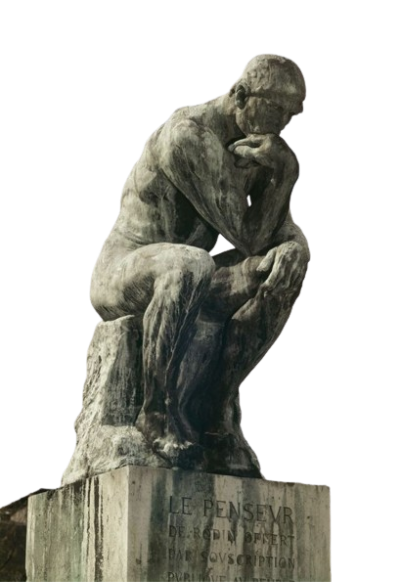Cogito, ergo Sum
코기토 에르고 숨(Cogito, ergo sum) 본문

cogito, ergo sum,
(Latin: “I think, therefore I am) dictum coined by the French mathematician and philosopher René Descartes in his Discourse on Method (1637) as a first step in demonstrating the attainability of certain knowledge.
It is the only statement to survive the test of his methodic doubt.
The statement is indubitable, as Descartes argued in the second of his six Meditations on First Philosophy (1641), because even if an all-powerful demon were to try to deceive him into thinking that he exists when he does not, he would have to exist in order for the demon to deceive him.
Therefore, whenever he thinks, he exists. Furthermore, as he argued in his replies to critics in the second edition (1642) of the Meditations, the statement “I am” (sum) expresses an immediate intuition, not the conclusion of a piece of reasoning (regarding the steps of which he could be deceived), and is thus indubitable.
However, in a later work, the Principles of Philosophy (1644),
Descartes suggested that the cogito is indeed the conclusion of a syllogism whose premises include the propositions that he is thinking and that whatever thinks must exist
라틴어 ‘코기토 에르고 숨(Cogito, ergo sum)’의 줄임말.
‘근대 철학의 아버지’라 불리는 데카르트가 <방법서설>에서 철학의 제1원리로 삼은 명제이다.
코기토(Cogito)라는 말은 ‘생각하다’를 뜻하는 라틴어 cogitare의 1인칭으로 ‘나는 생각한다’는 뜻이다. ‘
나’라는 주체를 생각하는 존재로 인식했다는 점에서 ‘나’를 신의 피조물로 본 중세적 관점과는 궤를 달리한다.
처음 데카르트는 이 명제를 프랑스어 “Je pense, donc je suis”로 썼는데 나중에 라틴어 문구로 바꾸었다.
여기엔 이유가 있었다. 중세 철학자 아우구스티누스(Augustinus)가 철학의 제1원리라고 생각했던 명제 역시 '나는 생각한다, 그러므로 존재한다'였기 때문이다.
중세와의 단절을 강조하기 위해 표현을 달리했던 것이다.
근대 철학의 문을 연 사람이 데카르트였다면 중세 철학의 문을 연 사람은 아우구스티누스였다.
아우구스티누스에게 이성은 신학적 명제를 증명하기 위한 도구였을 뿐이다.
그에게 신은 이해의 대상이 아니라 믿음의 대상이었고 이성은 이 믿음을 확립하거나 강화하는 데 쓰였다.
그에게 ‘코기토’는 신의 존재를 증명하는 출발점이었다.
반면 데카르트에게 ‘코기토’는, 신으로부터 독립된 주체를 의미하는 명제였다.
중요한 것은 ‘나’라는 자아가 주체의 힘으로 무엇인가를 사고할 수 있다는 사실이며, 그 사고를 통해 확실한 지식에 도달할 수 있는 능력이 내 안에 내재돼 있다는 사실이었다.
데카르트는 타고난 이 능력, 즉 본유관념(innate idea)이 어디에서 연유하고 있는가는 중시하지 않았다.
그 이성의 힘이 내 안에 있고 내 안에 있는 그 지식의 원천으로 자연을 비출 수 있다는 점에 더 주목했다.
이 ‘주체’라는 범주야말로 근대 철학을 이끄는 핵심이라고 할 수 있다.
주체는 인간이 신으로부터 독립됐다는 것을 보여주는 동시에 피조물인 자연계로부터도 인간이 분리돼 있다는 것을 보여준다.
이 주체와 객체의 분리는 곧 ‘주체가 객체를 어떻게 알 수 있는가’ 하는 인식론의 문제로 나아가는 길을 열어주었다.
